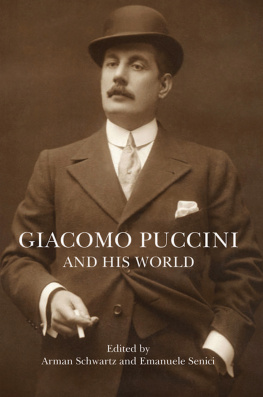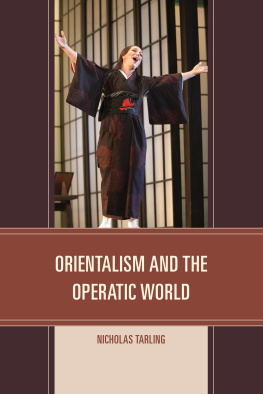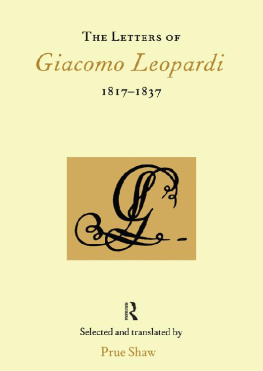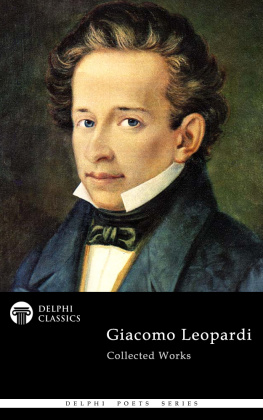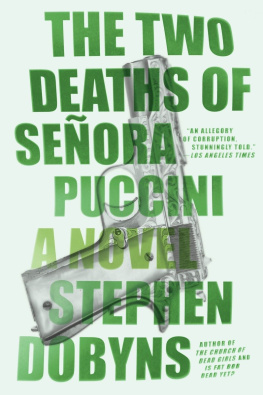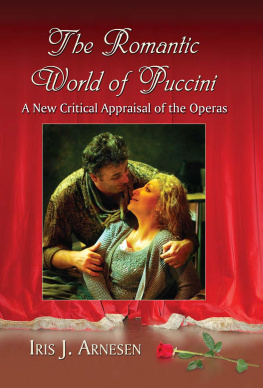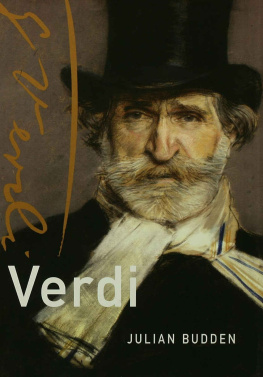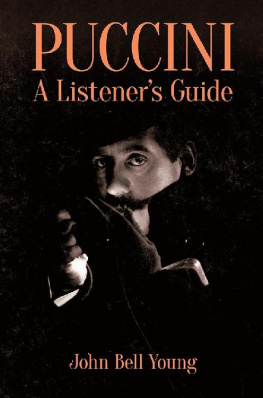
GIACOMO PUCCINI AND HIS WORLD
GIACOMO PUCCINI
AND HIS WORLD
EDITED BY
ARMAN SCHWARTZ AND EMANUELE SENICI
PRINCETON UNIVERSITY PRESS
PRINCETON AND OXFORD
Copyright 2016 by Princeton University Press
Published by Princeton University Press, 41 William Street, Princeton, New Jersey 08540
In the United Kingdom: Princeton University Press, 6 Oxford Street, Woodstock, Oxfordshire OX20 1TW
press.princeton.edu
All Rights Reserved
For permissions/credits, see
Library of Congress Control Number: 2016933980
Cloth ISBN: 978-0-691-17285-9
Paper ISBN: 978-0-691-17286-6
British Library Cataloging-in-Publication Data is available
This publication has been produced by the Bard College Publications Office:
Mary Smith, Director
Irene Zedlacher, Project Director
Karen Walker Spencer, Designer
Emily Hart, Cover Design
Text edited by Paul De Angelis and Erin Clermont
Music typeset by Don Giller
This publication has been underwritten in part by grants from Roger and Helen Alcaly and Furthermore, a program of the J. M. Kaplan Fund
Printed on acid-free paper.
Printed in the United States of America.
1 3 5 7 9 10 8 6 4 2
Contents
EMANUELE SENICI |
ARMAN SCHWARTZ |
ARTHUR GROOS |
ELLEN LOCKHART |
MICAELA BARANELLO |
ALESSANDRA CAMPANA AND CHRISTOPHER MORRIS |
BEN EARLE |
LEON BOTSTEIN |
INTRODUCTION, TRANSLATION, AND COMMENTARY BY EMANUELE SENICI |
INTRODUCTION, TRANSLATION, AND COMMENTARY BY ARMAN SCHWARTZ |
INTRODUCTION BY WALTER FRISCH, TRANSLATION AND NOTES BY ELAINE FITZ GIBBON |
INTRODUCTION BY MICHELE GIRARDI, TRANSLATION BY DELIA CASADEI; STAGING MANUAL TRANSLATION BY STEVEN HUEBNER |
INTRODUCTION BY ALEXANDRA WILSON, TRANSLATION BY DELIA CASADEI |
Acknowledgments
Above all, we would like to thank the many authors and translators whose contributions are featured in this volume. It has been a pleasure to work with all of them, and their efforts have left us not just hopeful, but tremendously excited, about the future of Puccini scholarship. Our work would not have been possibleor, indeed, half as enjoyablewithout the extraordinary support of the Bard Music Festival team. We are especially grateful to Christopher Gibbs, for the invitation to serve as scholars-in-residence and for many stimulating transatlantic conversations about all manner of topics relating to both the volume and the festival; to our editor Paul De Angelis for his peerlessly generous and insightful work on the book; to Irene Zedlacher, the festivals executive director, for her kindness and enthusiastic assistance with manifold practical matters; and to Leon Botstein, for his visionary stewardship of the festival itself. We would also like to thank the entire production office, especially Erin Clermont for her meticulous copyediting, Karen Spencer for her graphic design, and Don Giller for his work setting the musical examples.
Gabriella Biagi Ravenni, president of the Centro Studi Giacomo Puccini in Lucca, kindly put her unrivalled knowledge of Puccini at our disposal. Virgilio Bernardoni gave us generous permission to use Steven Huebners English translation of the staging manual for Madama Butterfly, originally commissioned by the Edizione Nazionale delle Opere di Giacomo Puccini, over which he presides. Annalisa Bini (Accademia Nazionale di Santa Cecilia, Rome) and Maria Pia Ferraris (Archivio Storico Ricordi, Milan) offered welcome assistance with images. Longtime Puccinians Arthur Groos, Roger Parker, and David Rosen guided us by advice and example.
A final note of thanks to Vincenzo Borghetti and Heather Wiebe for their love and support throughout the project.
Whisky per tutti!
Arman Schwartz, London, UK
Emanuele Senici, Rome, Italy
Permissions
These copyright holders have graciously granted permission to reprint or reproduce the following photographs:
Archivio Storico Ricordi, Milan:
Giacomo Puccini on the Brooklyn Bridge, (p. 97); all the above in Laggi nel Soledad: Indexing and Archiving the Operatic West, by Ellen Lockhart.
The stage set sketches for Il tabarro, (pp. 136 and 137), in Puccinis Things: Materials and Media in Il trittico, by Alessandra Campana and Christopher Morris.
The stage set sketches for Madama Butterfly used as (pp. 295, 296, 298, and 299 respectively) in Michele Girardis introduction to Albert Carrs Staging Manual for Madama Butterfly (1906).
The Metropolitan Opera Archives, New York:
Lucrezia Bori as Magda, (p.127), in The Swallow and the Lark: La rondine and Viennese Operetta, by Micaela Baranello.
Enrico Caruso as Dick Johnson, (p. 235) in Puccini on His Interpreters, by Emanuele Senici.
Accademia Nazionale di Santa Cecilia, Rome:
Puccini and his wife with Leopoldo Mugnone, (p. 253) in Puccini on His Interpreters, by Emanuele Senici.
Michele Girardi:
Bridge in the Japanese garden in Boulogne-Billancourt, (p. 294) in Girardis introduction to Albert Carrs Staging Manual for Madama Butterfly (1906).
Also, Theodore Presser Company has graciously granted permission to reproduce measures 17176 from Act 2 of I Shardana by Ennio Porrino. Courtesy of Casa Musicale Sonzogno, Theodore Presser Company, authorized representative. All rights reserved. Used with permission. (p. 174) in Puccini, Fascism, and the Case of Turandot, by Ben Earle.
The authors and publisher have made every effort to trace holders of copyright. They much regret if any inadvertent omissions have been made.
Introduction: Puccini, His World, and Ours
EMANUELE SENICI
Marco Malvaldi is a writer of detective novels that have met with widespread success in Italy over the last decade. In 2015 he published Buchi nella sabbia (Holes in the Sand), set in his hometown of Pisa, Tuscany, in September 1900. The plot revolves around a performance of Giacomo Puccinis recently premiered Tosca in the presence of King Victor Emmanuel III, who had just succeeded his father Umberto I to the throne of Italy following Umbertos assassination by an anarchist. In the book, the political aspects of the operaespecially the assassination of the operas male protagonist Mario Cavaradossiare considered rather too topical by the authorities in the light of these recent events, to the point of making the choice of Tosca to celebrate the Kings visit to Pisa a highly questionable one. At the same time, a group of local anarchists, which includes the tenor singing Cavaradossi, sees the performance as the perfect opportunity to stage a demonstration against the King. In Act 3 the tenor is shot for real, however, and most of the book is devoted to the search for the assassin by various parties, including the police and a left-leaning journalist who had been asked by his newspaper to report on the event. Malvaldi, who turned to musicologists for information on Tosca and the world of opera in Italy at the turn of the twentieth century, is unusually accurate on these aspects; at the same time, he has invented a plot not only with evident parallels to that of the opera, but with obvious political connotations for present-day readers in Italy, where the alleged connections between the political parties and recent high-profile investigations by police and the judiciary have been fiercely debated.
I begin with this very recent novel because it can function as an unfamiliar yet useful starting point for introducing at least some of the circumstances, assumptions, and expectations that shape the discourse on Puccini in the early twenty-first century. First among them is the immense success of Puccinis operas over the course of the twentieth century, which is related to their significant presence in cultural spheres where opera does not normally feature (such as the detective novel) but has tended to make us focus more on continuities than differences when discussing them. At the same time, the diminishing hold that opera in general has on present-day collective consciousness in the so-called West should not go unmentioned, since it has an impact on the position of even the most famous among Puccinis works within this consciousness, and therefore on the kinds of assumptions that can be made about them at different cultural levels. No less relevant is the Italian national context in which Puccinis operas were first conceived and to which they are thought to belong genetically for a historically informed interpretation of at least some of their most significant features. Conversely, their popularity reached almost immediately a truly transnational dimension, and therefore they have interacted ever since with several different cultures, of which they have been part for about a centurymost prominently the culture defined by the English language, to which the present volume is, of course, primarily addressed. Finally, we need to take into account the interaction between what we tend to consider the more fixed components of an operatic work, the libretto and the score, and the more fluid and unstable ones, the staging and the musical interpretation, for a rounded understanding of the varied and sometimes even opposite meanings that Puccinis operas can have, and have had, for different audiences attending different productions in different performative contexts. The contributions collected here address some of these issues more directly than others, at the same time broadening the scope of their investigation to include other equally important themes. One of the overarching aims guiding the editors preparation of this volume has been to present a plurality of historical, critical, and methodological standpoints, in the belief that a wide spectrum of approaches best serves the equally wide spectrum of concerns and issues that Puccini brought to the lyric stage about a century ago.
Next page
